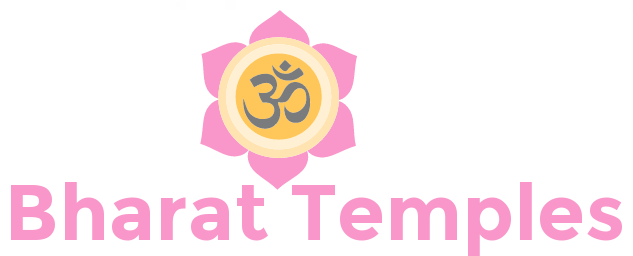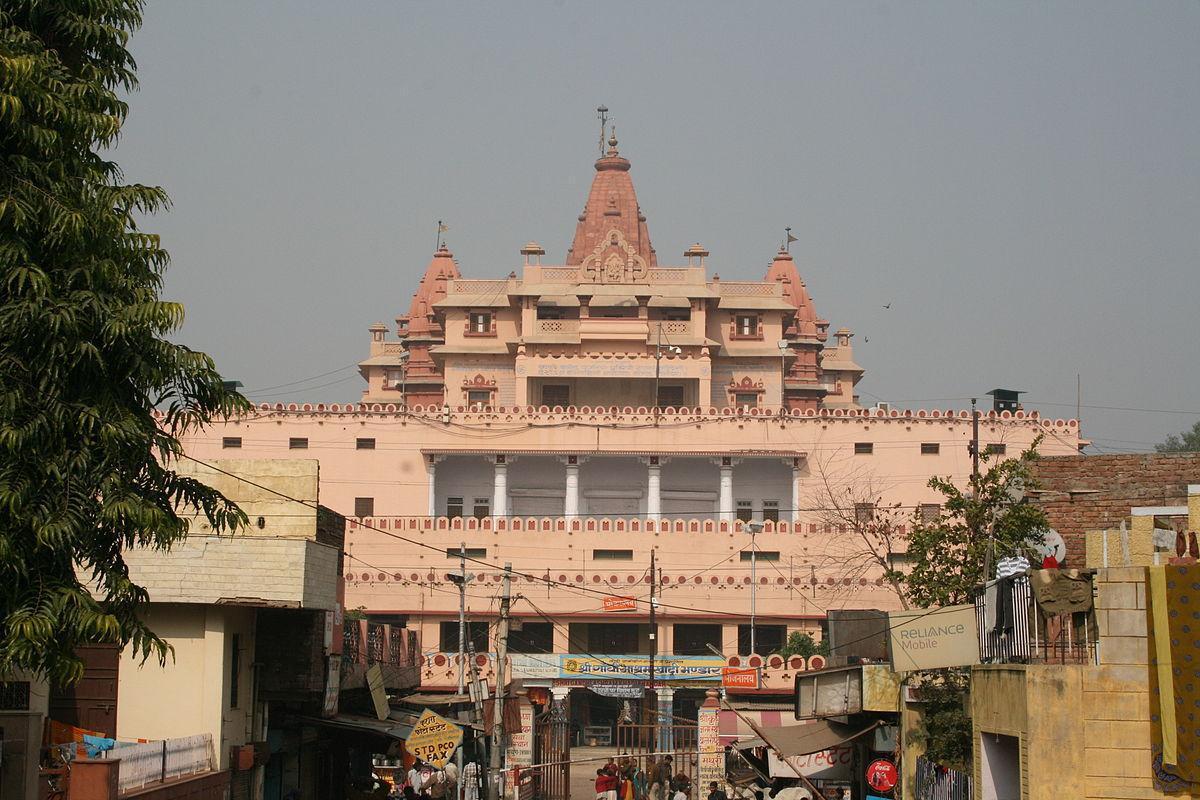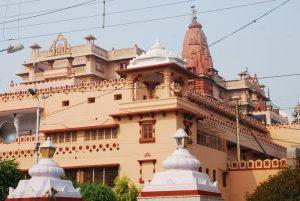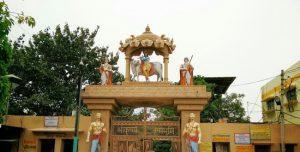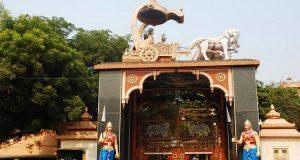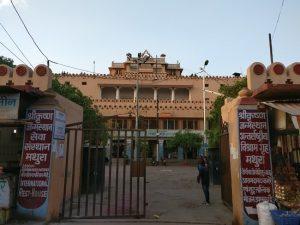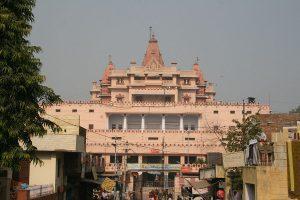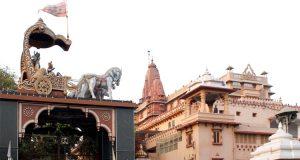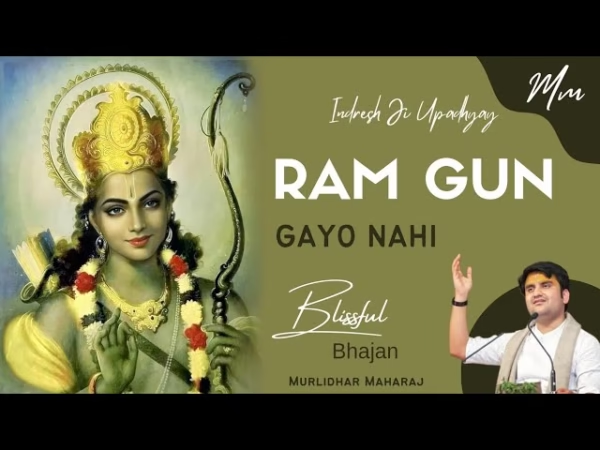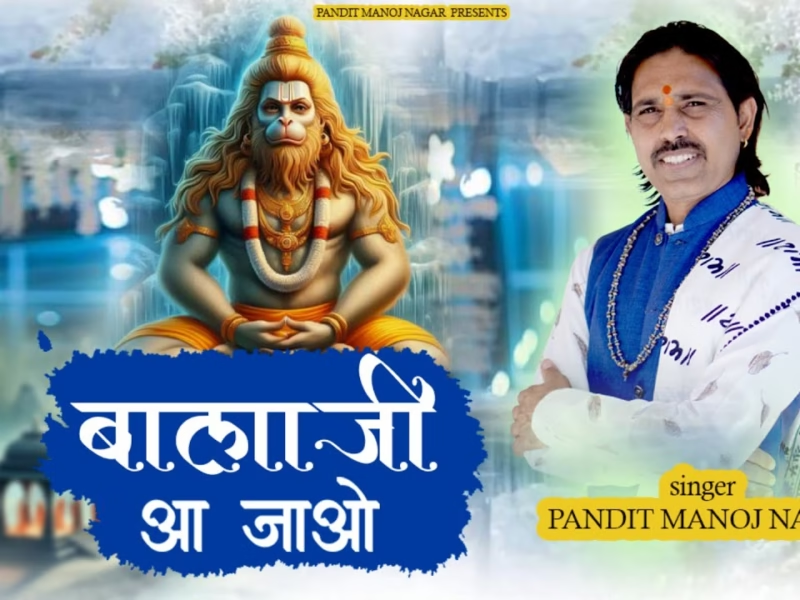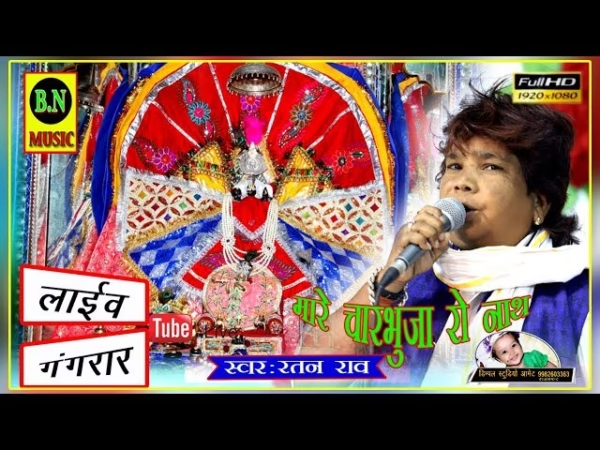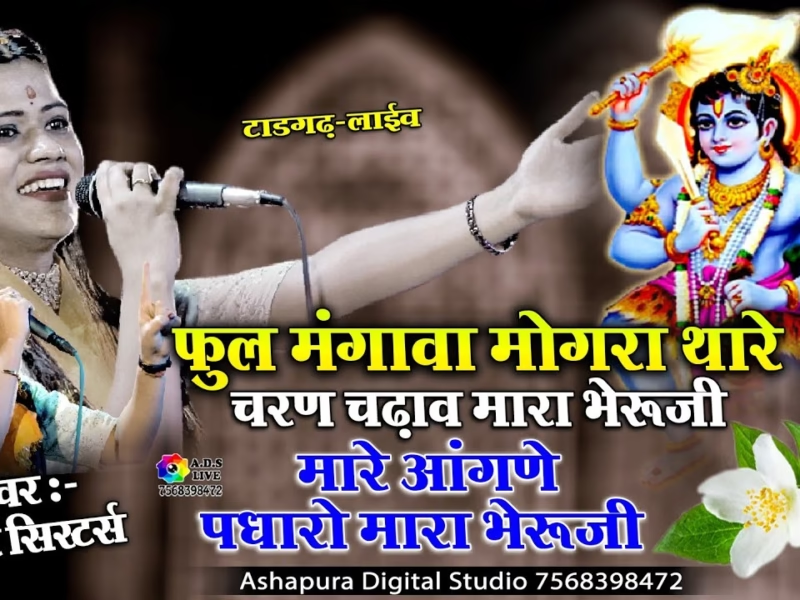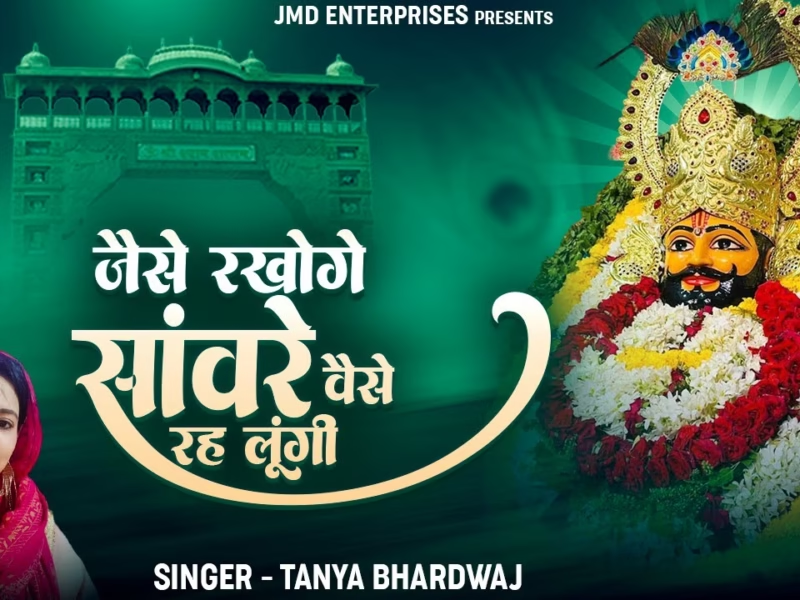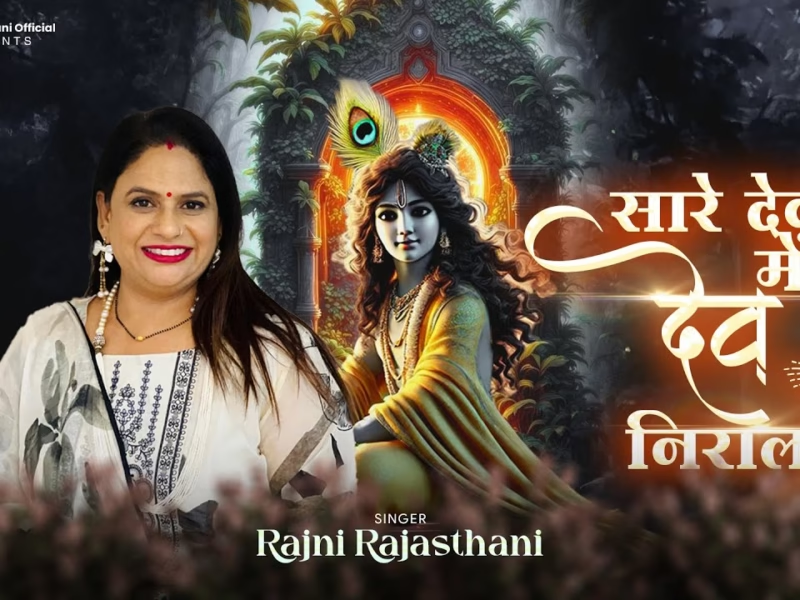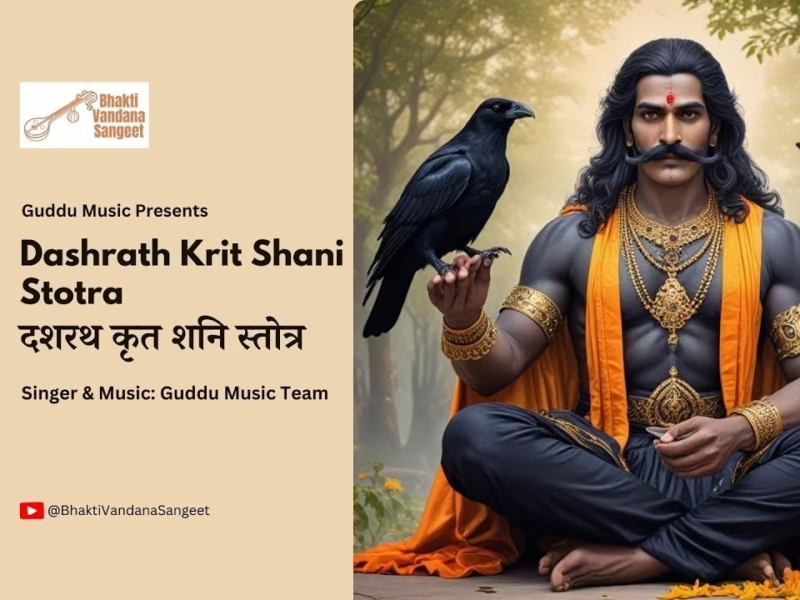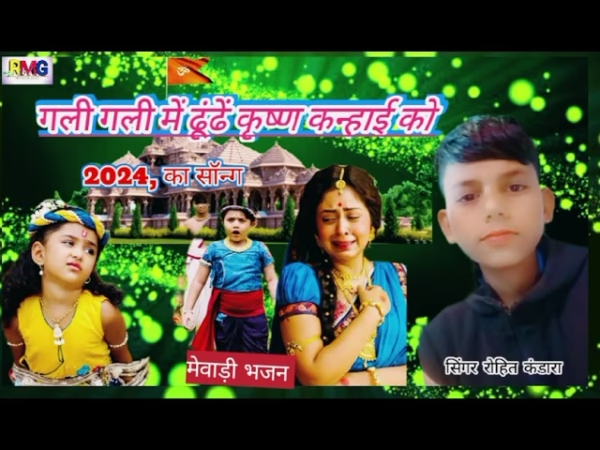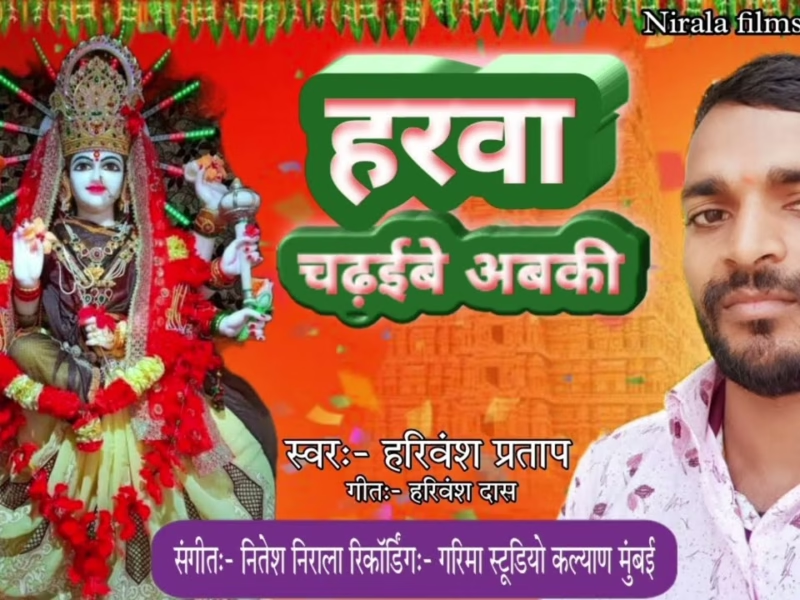Krishna Janmasthan Temple Complex, Mathura, Uttar Pradesh
| Date built: | 1982 |
|---|---|
| Deity: | Keshavdeva |
| Architectural style: | – |
| Major festivals | – |
| Locale: | – |
| District:: | Mathura |
| Address: | – |
| Phone | – |
The Krishna Janmasthan Temple Complex is a group of Hindu temples in Mallapura, Mathura, Uttar Pradesh, India. These temples are built around the place where major Hindu deity Krishna is said to have been born. The place holds religious significance since the 6th century BC. The temples were destroyed multiple times throughout history, latest by Mughal emperor Aurangzeb in 1670 who erected Eidgah there. In 20th century, the new temple complex was built with financial help from industrialists containing the Keshavdeva temple, the Garbha Griha temple at the birth place and the Bhagavata Bhavan.
Architecture
Mathura fell under British control in 1803. The East India Company auctioned the land of Katra and it was purchased by Raja Patnimal, a wealthy banker of Banaras.Raja Patnimal wanted to build the temple but could not do so. His descendants inherited the land of Katra. His descendant Raj Krishna Das was challenged, for the ownership of 13.37 acres of land on which the shrine and the Eidgah is situated, in two civil suits by the Muslims of Mathura but the Allahabad High Court ruled in favour of Raj Krishna Das in both suits in 1935.Kailashnath Katju and Madanmohan Chaturvedi had helped in lawsuits. Politician and educationist Madan Mohan Malaviya acquired the land from Raj Krishna Das on 7 February 1944 at the cost of Rs. 13000 with financial help of Industrialist Jugal Kishore Birla.Following death of Malaviya, Jugal Kishore Birla formed a trust named Shri Krishna Janmabhoomi Trust, later registered as the Shri Krishna Janmasthan Seva Sansthan, on 21 February 1951 and acquired the land. Jugal Kishore Birla entrusted the construction of the new temple with another industrialist and philanthropist Jaidayal Dalmia. The construction of the temple complex was started in October 1953 with leveling of lands and completed in February 1982. His eldest son Vishnu Hari Dalmiasucceeded him and served on the Trust until his death. His grandson Anurag Dalmia is Joint Managing Trustee on the Trust. The construction was funded by other business families including Ramnath Goenka. In 1968, the Trust and the Shahi Eidgah committee reached an agreement which granted the temple land to the Trust and the management of the Eidgah to the Eidgah committee as well no legal claim of the Trust on the Eidgah.Following the demolition of the Babri Mosque in 1992, Manohar Lal Sharma, a resident of Vrindavan, has filed a petition in the Mathura District Court challenging the 1968 agreement as well as a petition to quash the Places of Religious Worship Act of 1991 which preserves the status quo as on 15 August 1947 for all places of worship
Legend / Local stories
According to Hindu traditions, Krishna was born to Devaki and Vasudeva in a prison cell where they were confined by his maternal uncle Kansa, a king of Mathura, due to prophecy of his death by the child of Devaki. According to tradition, a temple dedicated to Krishna was built the birthplace by his great grandson Vajranabh. The present site known as Krishna Janmasthan (lit. birthplace of Krishna) was known as Katra (lit. market place) Keshavdeva.[5] The archeological excavations of the site had revealed pottery and terracotta from 6th century BC.[5]It also produced some Jain sculptures as well as a large Buddhist complex including Yasha Vihara, a monastery, belonging to Gupta period (c. 400).[5] Cunningham opined that Hindus may have occupied the former Buddhist site.[3] The Vaishnava temple may have erected on the place as early as the first century. Some late 8th century inscriptions mentions donations to the sie by the Rashtrakutas. In 1017 or 1018, Mahmud of Ghazni attacked and plundered Mahaban. Ghazni’s scribe, though not accompanying him on the expedition, Al Utbi describes in his Tarikh-i-Yamini neighbouring holy town which is identified as Mathura. He wrote, “In the centre of the city there was a huge and magnificent temple, which the people believed wasn’t built by men but by the angels… Any description of the temple, either in words or in pictures, would fall short and fail to convey its beauty.” Mahmud of Ghazni wrote, “if any one wished to construct a building equal to it, he would not be able to do so without spending a hundred million dinars, and the work would occupy two hundred years, even though the most able and experienced workmen were employed.” He ordered to burn all the temples and demolish them. He plundered gold and silver idols and carried away a load of hundred camels.A stone inscription in Sanskrit found from the site mentions that in Vikrama Samvat 1207 (1150) a person named Jajja who may have been a vassal of Gahadavala king built a Vishnu temple which was ‘brilliantly white and touching the clouds’.Vaishnava saints Chaitanya Mahaprabhu and Vallabhacharya visited Mathura in early 16th century.
Abdullah, in the reign of Mughal emperor Jehangir, mentions in Tarikh-i-Daudi the destruction of Mathura and its temples by Delhi SultanSikandar Lodi in 16th century. Lodi had prohibited Hindus from bathing in the river and shaving of heads on the banks as well. In the reign of Jehangir, in 1618, Raja Veer Singh Deva Bundela of Orchha had built a temple at the cost of thirty-three lakhs. A French traveller Tavernier visited Mathura in 1650 and had described the octagonal temple built in red sand stone.Italian traveller Niccolao Manucci who worked in Mughal court has also described the temple. Mughal prince Dara Shikoh had patronised the temple and donated a railing to the temple. The railing was removed Mathura governor Abdun Nabi Khan on the order of Mughal emperor Aurangzeb and he built Jama mosque on the ruins of the Hindu temples. During the Jat rebellion in Mathura, Abdul Nabi Khan was killed in 1669.Aurangzeb attacked Mathura and destroyed that Keshavdeva temple in 1670 and built Shahi Eidgah in its place.
Photo Gallery
How to Reach:
Contact Details
Official Address
